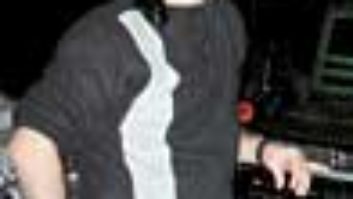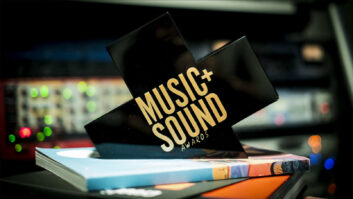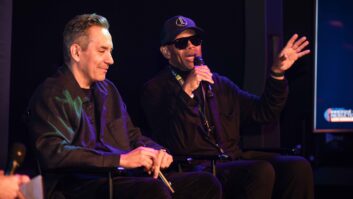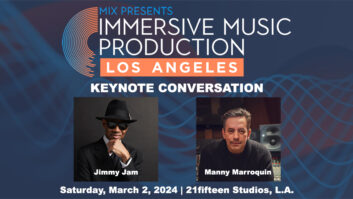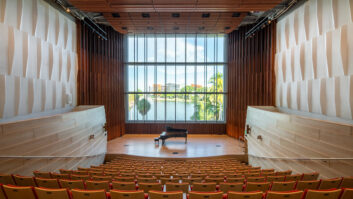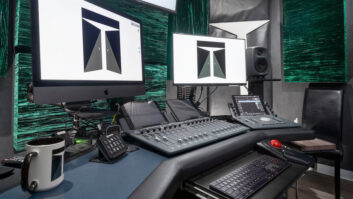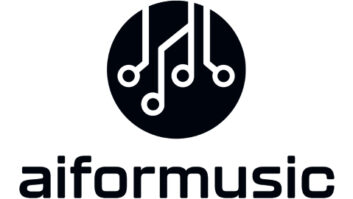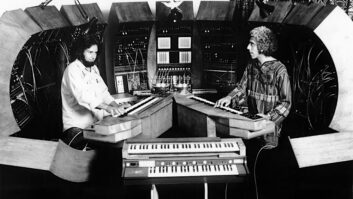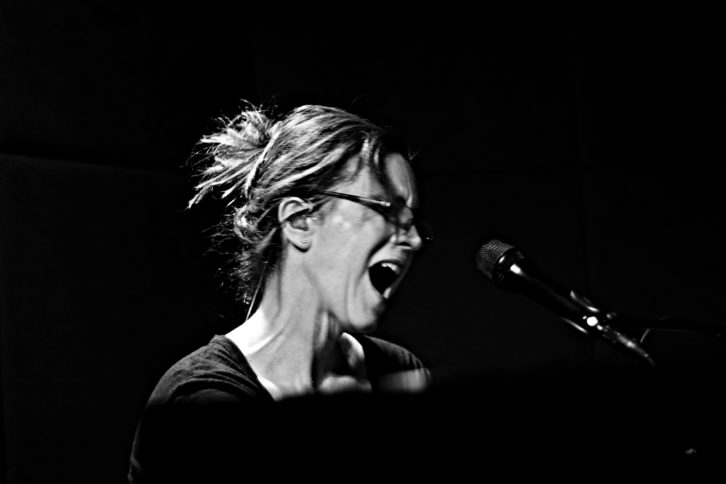
Patricia Barber is solidly grounded in the language of jazz, yet always inventive in style. Over the past three decades, the composer, singer and pianist has released 18 albums, connecting with a broader audience each time. Barber’s latest album, Higher, is a daring, imaginative work, melding lyrical poetry and jazz in a stunning song cycle of eight original compositions, supplemented with interpretations of classics from the American songbook.
The album was captured in DXD and released in stereo in late 2019, with a Volume 2 release coming this fall and limited-edition vinyl and SACD 5.1 releases in the works. Recorded at Chicago Recording Company and mixed at Skywalker Sound, it’s striking in its spare arrangements and richly textured soundscapes that highlight Barber’s coolly subtle vocal stylings.
Higher was recorded and mixed by husband-and-wife team Jim Anderson and Ulrike Schwarz, veteran engineer/producers with 60 years of combined experience and dozens of Grammys, Emmys and other accolades between them. “My role, here, is really traditional recording, mixer/producer,” says Anderson.
“For the classical music projects, I’m the producer and editor, but for our jazz and contemporary projects, I have more of a technical director role,” adds Schwarz. “I develop crazy ideas about what could be done.”
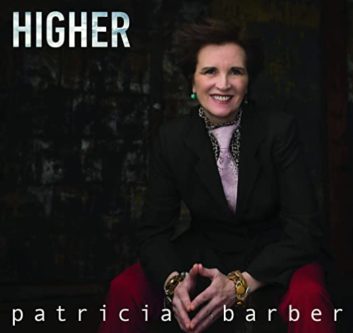 For Higher, they agreed Schwarz would oversee technical aspects of recording while Anderson managed the more traditional recording elements in his role as associate producer. Anderson, who has recorded Barber for 30 years, says the relationship has always centered around trust: “Every time that we work together, I’ve been allowed to look at the playing field and to say, ‘What is it that we could do that would be top of the game, state of the art?’ As long as I’ve got Patricia’s clarity of voice and every word is crystal clear, that’s really what she wants.”
For Higher, they agreed Schwarz would oversee technical aspects of recording while Anderson managed the more traditional recording elements in his role as associate producer. Anderson, who has recorded Barber for 30 years, says the relationship has always centered around trust: “Every time that we work together, I’ve been allowed to look at the playing field and to say, ‘What is it that we could do that would be top of the game, state of the art?’ As long as I’ve got Patricia’s clarity of voice and every word is crystal clear, that’s really what she wants.”
The album was tracked live, using minimalist signal chains: mics, mic pres, straight to recording. “We’re not going through the console at all,” says Anderson. “Not for trim or anything else. So it’s pretty much the direct line is as far as we can get it.
Capturing a Moment
Although Higher was initially released in stereo, a 5.1 surround mix was always a consideration. “One thing that we’ve learned over the years is to think the way you hear in immersive,” Anderson says. “If I have coincident miking—an M/S or an X/Y—I will combine it with maybe a wider ORTF or another stereo technique. The coincident, the X/Y, the M/S, will tend to go in the back, and then the other, wider miking tends to go in front. It puts a very nice kind of ceiling on a mix; you can really feel like you are sitting in the drummer’s position or in the piano position, that kind of thing.”
Bass was kept in the phantom center: “One trick I’ve learned is to keep the bass always up front; don’t let the bass player wander off the front stage. If you do, the front tends to become very unstable,” he adds.
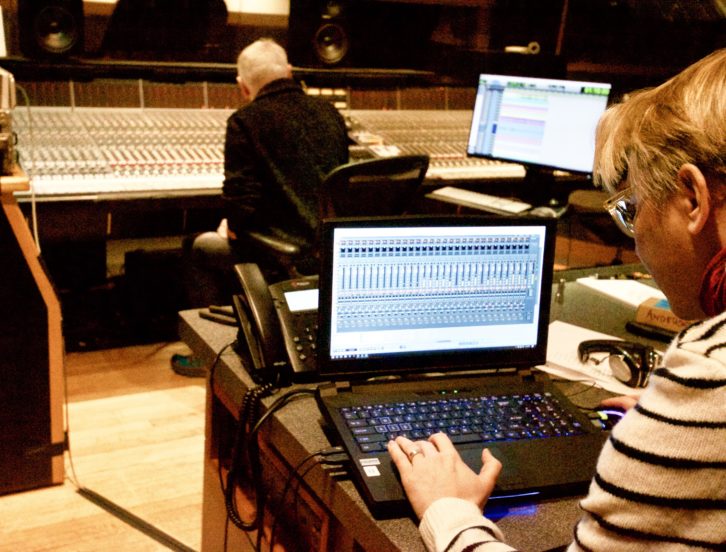
Anderson’s go-to mic for Barber’s vocals is a Brauner VM1. “I’ve been using that with her since [1998’s] Modern Cool, which was the third record I did with her.” For this project, he set the Brauner to omni.
Drums were captured with DPA (B&K) and Sanken microphones, bass with a Neumann stereo mic and an AMB tube DI, and Barber’s piano with a mix of DPA, Sanken and Sennheisers. Mic pres were John Hardy M-1s: “I have eight channels that I always carry with me, and four channels of Millennium; that’s my little 12-pack of mic pres,” says Anderson, noting that John Hardy himself brought 20 additional channels of preamps into CRC to support the Higher sessions.
The project was recorded, mixed and mastered in high-resolution (352.8kHz/24-bit) DXD using a Merging Technologies Pyramix/Horus recording system. Recording in DXD was transparent in more ways than one.
“For Patty, in the studio, she never noticed any difference at all, but in the back of the control room, we’re recording in super-high resolution,” says Anderson. “Ulrike was sitting there with a laptop and a headphones, and we were using the same mics and the same mic pres, but then those mic pres went into a Merging Technologies Horus and analog out of that, the signal went to the in-house Pro Tools that the musicians where hearing. We had the guys at CRC build us a cable that would tie the two systems together so when I would go into Record in Pro Tools, it would take Ulrike into Record, too. Every time we did something, we were always timestamped together.
“Previously there hadn’t been a laptop that could record 64 channels in DXD,” says Schwarz.
“Because the record was going to be recorded in Chicago, edited in New York and mixed at Skywalker—and I didn’t want to ship something the size of a small fridge around—we had to build a laptop that everybody said couldn’t be done. With Merging and the PCAudioLabs team in Nashville, we got it done in time for it to work in a recording session.”
Anderson and Schwarz continually strived to push the capabilities of their recording rig. “We wanted this clock that locks in through the record, and there are a few features we would need to really use it well in the studio, and so we had been talking to Merging directly,” says Anderson. “Instead, they built this even crazier clock; it’s really an audiophile piece that we’re taking into a professional studio situation.”
“It’s the Merging Technologies Clock-U, the ultra-low-noise edition of their consumer clock, and it’s accurate to 20 parts per billion,” adds Schwarz. “I had never heard of that category, because everything stopped at parts per million. At first you think, ‘Okay, so what changed? But all of a sudden, when you go back to your internal clock or the analog 1-inch, 2-track recording of the mix, which last year you thought sounded amazing, you think, “Oh, no, this doesn’t actually sound that great or accurate.”
Mixing at Skywalker
“When we got to the mix, we never even looked back at the Pro Tools backup because the opening of the first track of DXD was just mind-blowingly beautiful,” Anderson says. “We just couldn’t believe the quality that we were hearing.”
Higher was mixed at Skywalker Sound, where Anderson crafted Grammy-winning surround mixes for Barber’s Modern Cool and Jane Ira Bloom’s Early Americans. “When it comes to the mixing, it’s done the old-fashioned way,” says Anderson. “Nothing is in the box; we’re mixing on a large analog board, and we really think that’s still the way to go as far as putting all the elements together. There was no processing on the voice aside from the just slightest little limiting.”
“There were no plug-ins, except some noise reduction tools in mastering to take out little clicks here and there,” adds Schwarz. “We use an analog reverb, a live chamber, and the process is so clean that we found we didn’t need outboard gear to fix things. We didn’t need to fix anything.”
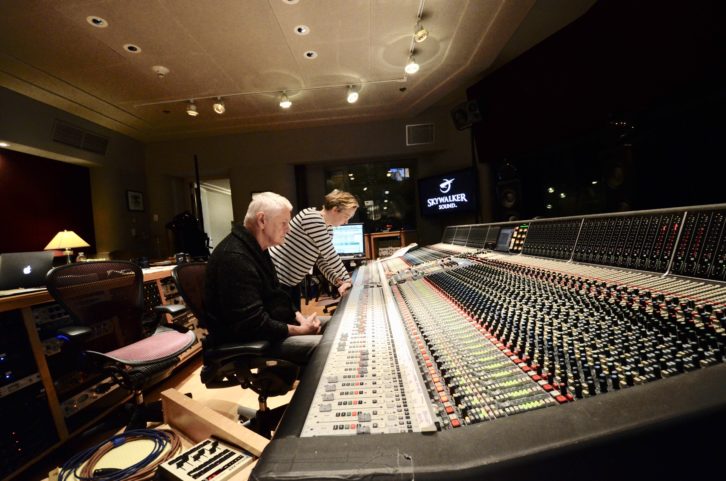
Anderson and Schwarz approach recording with the expectation that projects will be released in multiple formats. For this reason, Anderson says, he always aims to capture enough recorded material to give him the flexibility to naturally create an interesting surround or immersive mix.
“I will put extra microphones up here and there in the booths or on the floor or something like that, just to be able to get an extra dimension that I might not normally use in stereo,” he says. “Every time we do a format, we do a mix for that format. So, for this project we have a stereo format and we’re doing a 5.1 mix, and then if we end up doing something beyond 5.1, we’ll go back and we’ll do a true remix. Working with the strengths of what we know as far as the stereo mixing, 5.1 mixing and now immersive mixing, there’s no reason why I have to approach this as a unique event.”
